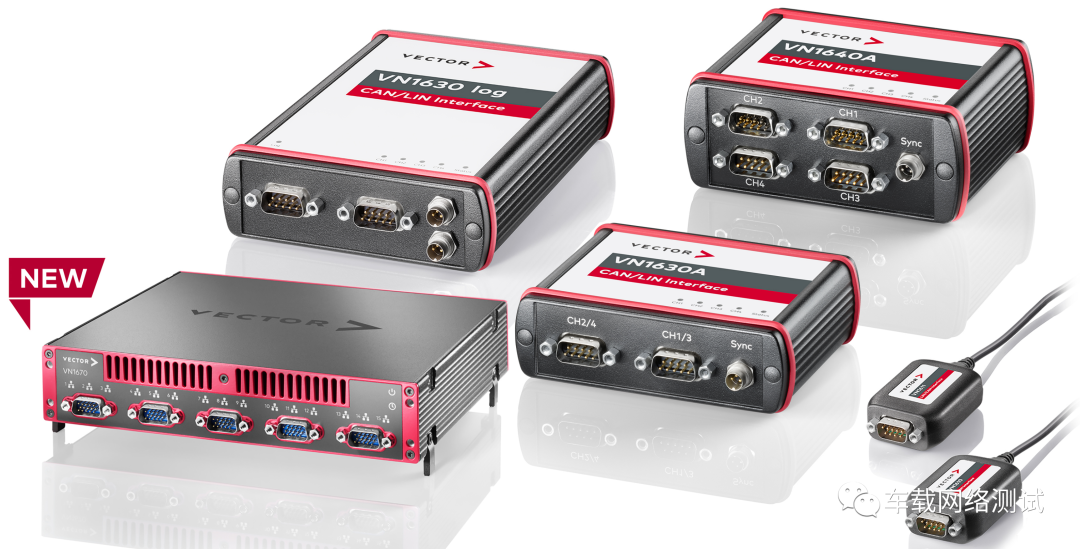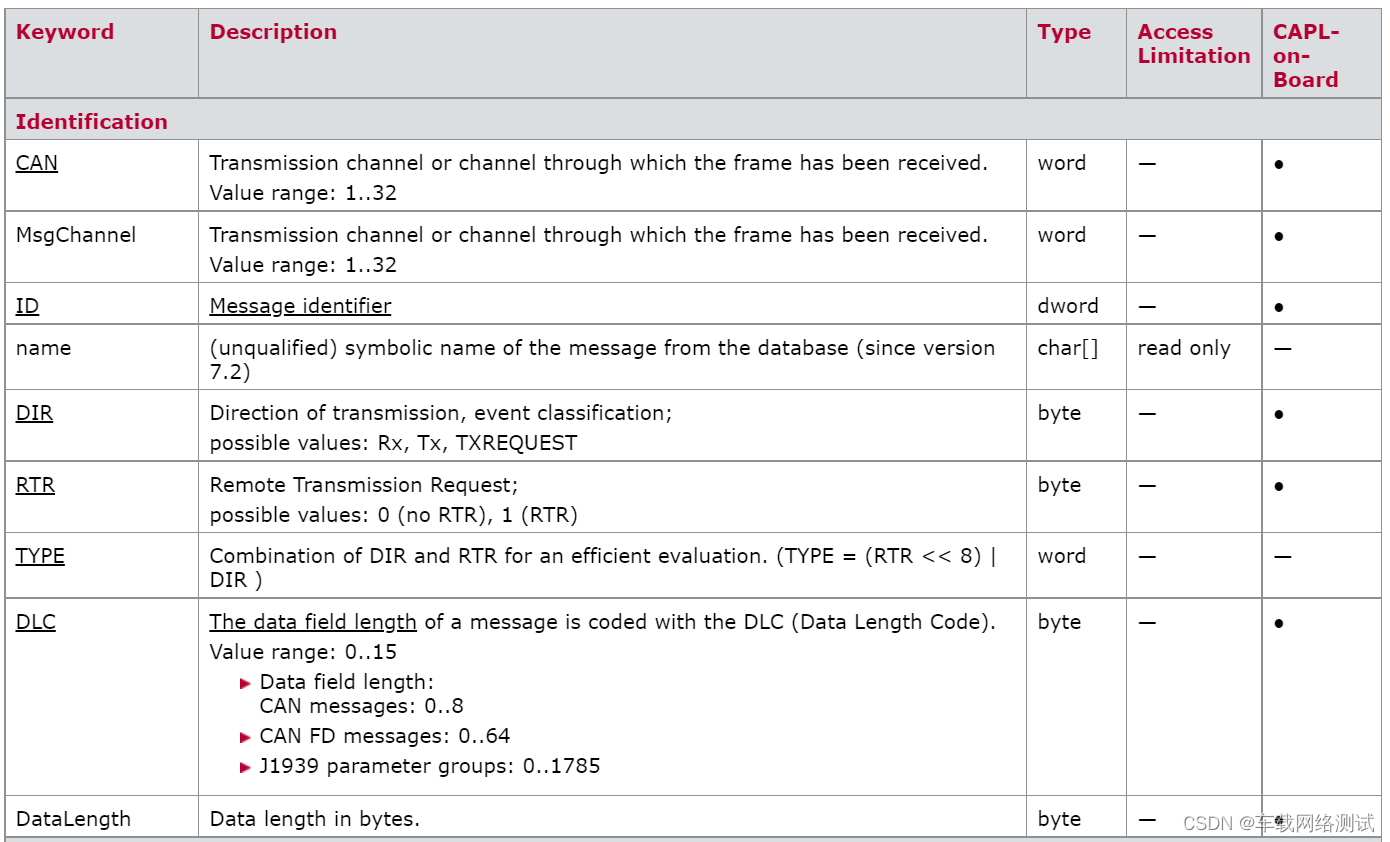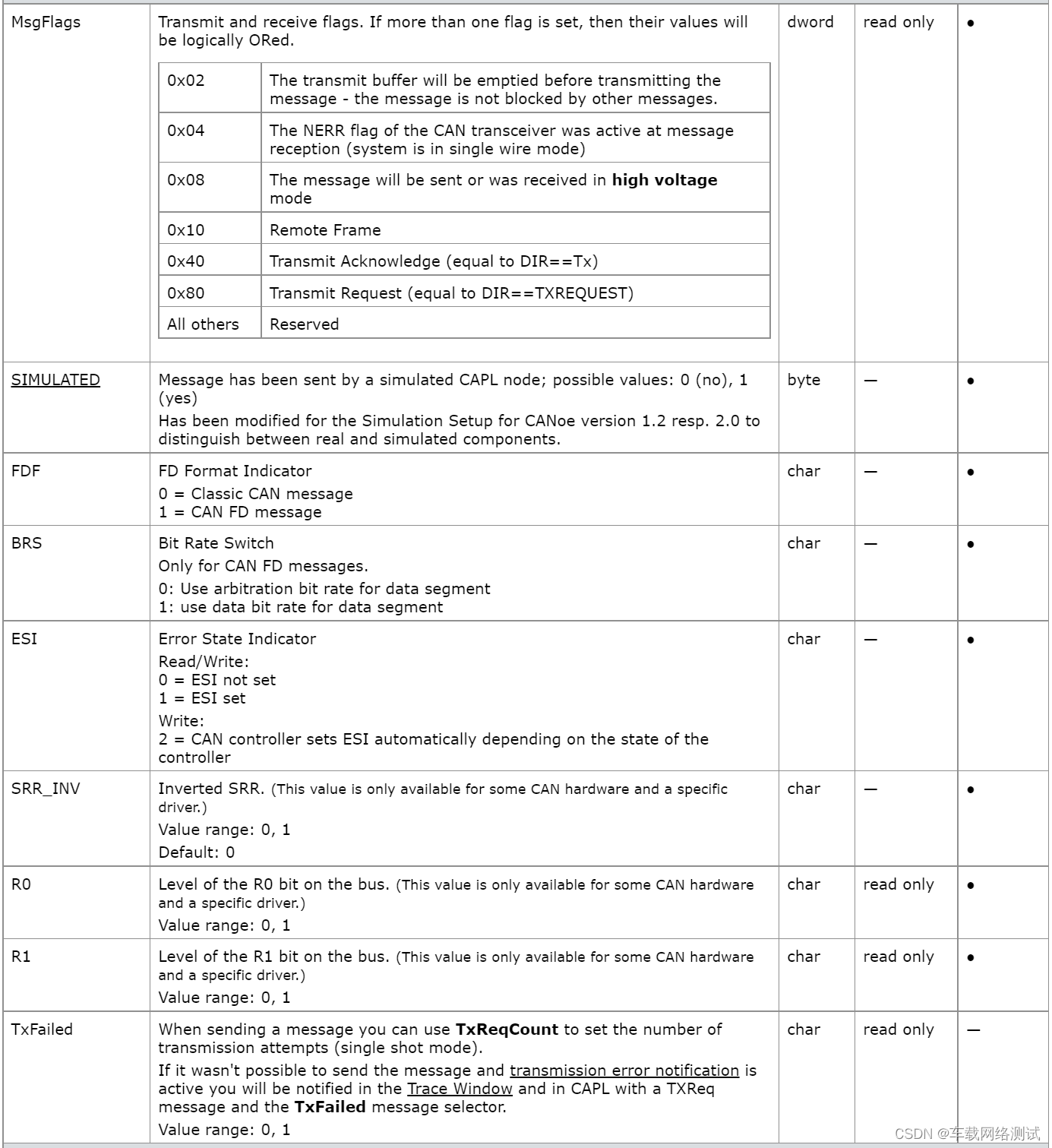前面已经介绍了Network Node节点的创建和配置,我想大家如果仔细研究下这块基本没什么问题,但是针对相应的CAPL编程该如何去做呢?今天这篇文章就是我们专门介绍在Network Node节点中常用的一些操作函数和使用技巧。

五、 Network Node相关CAPL编程
1、on message
on message作为一个功能异常强大的CAPL专有的的姑且叫它函数吧,它伴随很多人从初入测试行业到熟练与开发battle三小时不会累,可想而知的强大。首先我们来介绍它的第一种用法。
on message 0x101
{
this.BRS =
this.FDF =
this.TYPE =
this.dlc =
this.byte(0) =
.
.
.
this.byte(n) =
}从上面我们能看到使用起来是相当的简单,而且Vector CAPL Browser自带联想功能,是你能够快捷、方便的进行编程,在on message 0x101中,其中on message你可以把它当成一个函数,0x101作为一个触发开关,一旦总线上出现0x101报文,就会进入到{}的内部(并且实时更新),就会执行内部的CAPL代码,我们可以在里面编写任意我们需要的功能。这里大家会注意到有一个特殊的单词this那他是什么意思呢?
this在这里其实相当于一个message类型,这样说的话大家应该就很好理解,它就是总线上实时的一个message,内部包含了大量的信息,这里我就不再一一列举,在上面的代码中我列举了几个常用的参数,基本能够满足我们大部分时候的使用,实际这些参数都可以在CAN报文中找到,大家如果有兴趣也可以学习一下CAN报文的结构,是跟这里一一对应。下面我也列举一下。


这里顺便再提下Rx和Tx:
| Rx | Message was received (DIR == Rx) |
|---|---|
| Tx | Message was transmitted (DIR == Tx) |
| TXREQUEST | Transmission request was set for message (DIR == TXREQUEST) |
下面我们说另外一种用法,就是将CAN1的报文全部转发到CAN2上,源码如下:(简单归类为通道识别,只要是某一CAN通道就会触发)
//The gateway should transmit all messages between Bus 1 and Bus 2 in both directions:
on message CAN1.*
{
message CAN2.* msg;
if(this.dir != rx) return; //important!
msg = this;
output(msg);
}
on message CAN2.*
{
message CAN1.* msg;
if(this.dir != rx) return; //important!
msg = this;
output(msg);
}第三种使用方法就是任意触发:
//将所有接收到得报文发送出去
on message *
{
output(this);
};上面基本囊括了on message的大部分使用场景,至于内部填充和想要做什么大家可以自由发挥想象,实现你能想到的所有功能吧。
2、数据类型介绍
| Scalar Data Types |
|---|
常见变量定义之struct:
//struct 常见定义
//one
struct Data {
int type;
long l;
char name[50];
};
//two
struct Point
{
int x;
int y;
};
struct Point myPoint;
struct { int first; int second; } pair;
//three
variables
{
struct { int first; int second; } pair;
}
on start
{
pair.first = 1;
pair.second = 2;
}
//four
struct Point
{
int x;
int y;
};
struct Point myPoint;
struct Point allPoints[50];常见变量定义之enum:
//Enumeration types are defined in CAPL in exactly the same way as in C:
enum Colors { Red, Green, Blue };
//
enum State { State_Off = -1, State_On = 1 };
//If necessary, an enumeration type is implicitly converted to an integer type
int i; enum State state;
state = State_Off;
i = state + 1; // i == 0
//Enumeration types can be used especially in switch-case-statement:
switch (state) {
case State_On: write("On"); break;
case State_Off: write("Off"); break;
default: write("Undefined"); break;
}
/*For a conversion from an integer type to an enumeration type or between two different enumeration types a cast is necessary:*/
enum State state; enum Colors color;
state = (enum State) 1; // state == State_On
color = (enum Color) state; // color == Green
数组类型的我们就不在这里介绍了,都是跟C语言一样的,如果有需要度娘随便一搜都是一大把,我就不在这卖弄了。
这一块太多了,如果后续催更的人比较多的话,我就继续写吧!!!
























 被折叠的 条评论
为什么被折叠?
被折叠的 条评论
为什么被折叠?










